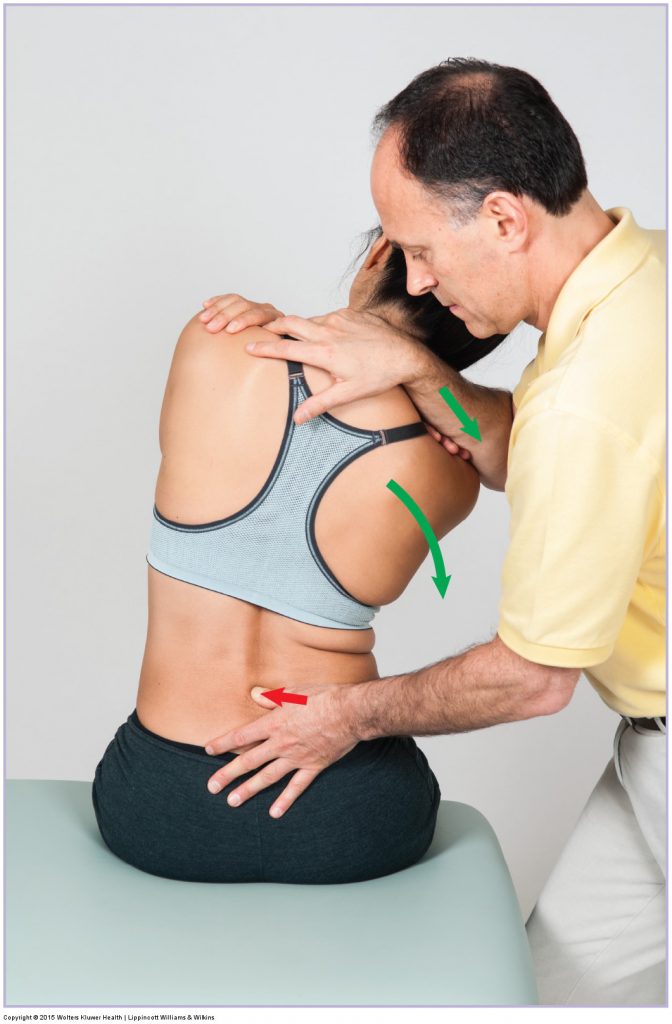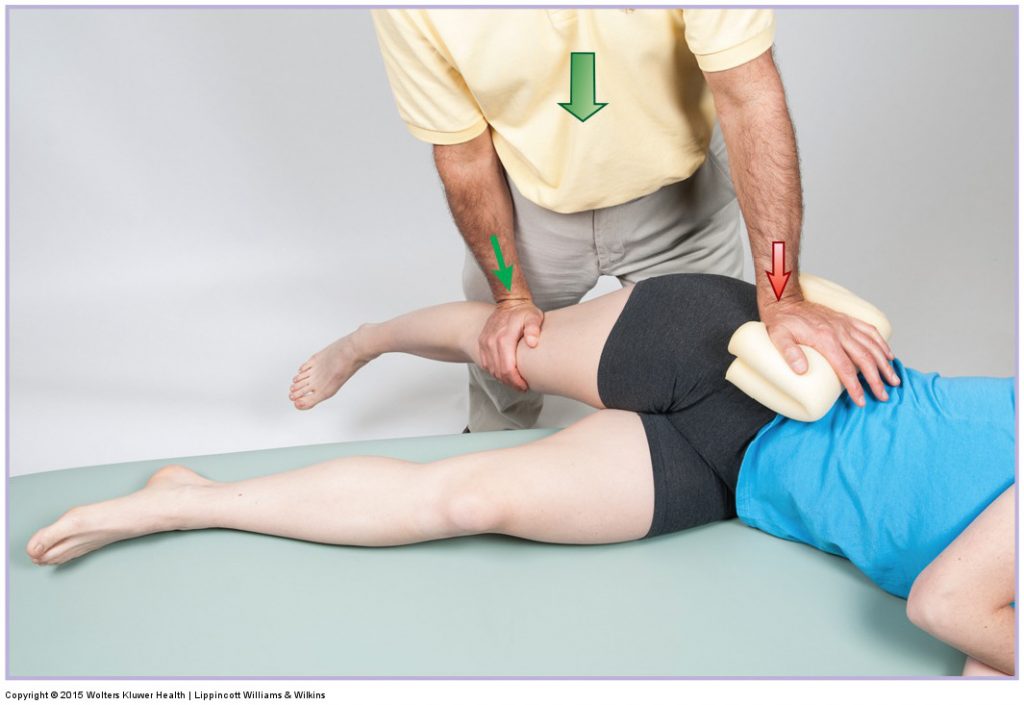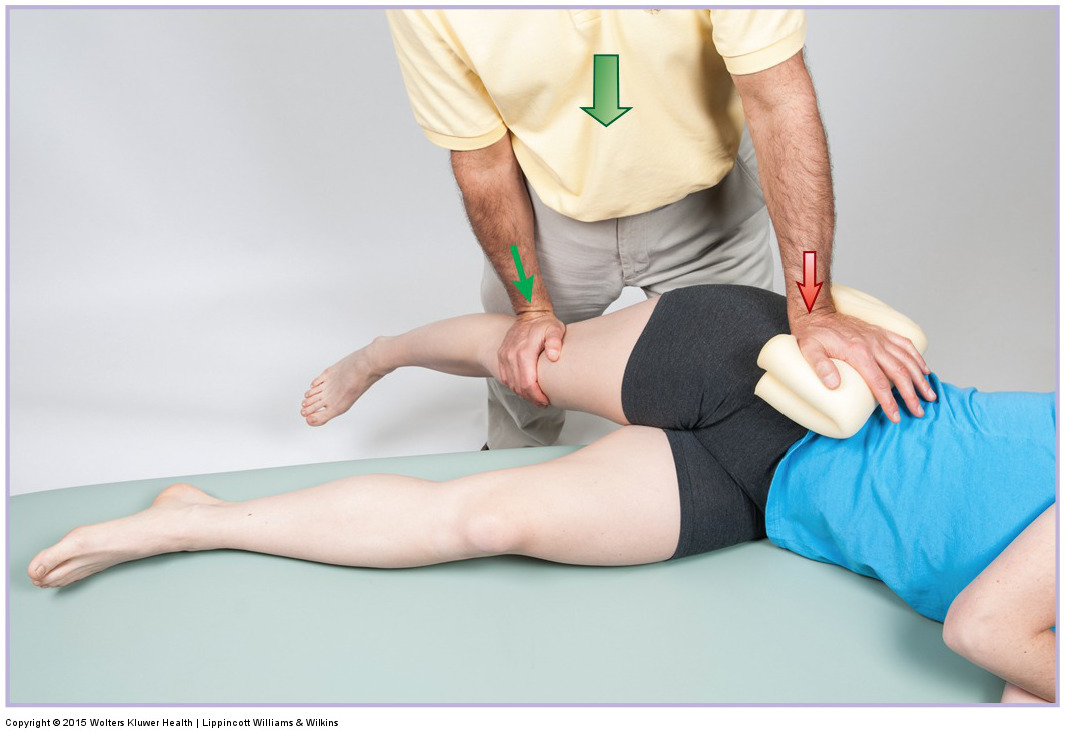 Simply put, manual therapy is any therapy applied by hand. The word “manual” comes from the Latin word for hand.
Simply put, manual therapy is any therapy applied by hand. The word “manual” comes from the Latin word for hand.
Even though Manual Therapy is defined by the therapist/physician using their hand as the contact for the therapy being done, the term Manual Therapy is usually expanded to include other contacts, such as the forearm, elbow, foot, or even other parts of the body. Manual therapy also often involves the use of tools that are held in the hand.
What is Clinical Orthopedic Manual Therapy?
Clinical Orthopedic Manual Therapy (COMT) is Manual Therapy aimed at remedying specific. The term Medical Massage is sometimes used to describe the COMT performed by a massage therapist.
Who does Manual Therapy?
Many different therapists, physicians, and other professionals practice manual therapy.
The following professions perform Manual Therapy:
- Massage Therapists (and other Bodyworkers*)
- Physiotherapists (Physical Therapists)
- Occupational Therapists
- Chiropractic Physicians
- Osteopathic Physicians
- Rolfers (& other Structural Integration Therapists)
- Certified Athletic Trainers
- Fitness Coaches
- Stretch Therapists
* Many different techniques of “massage” exist. As will be described later, the term “bodywork” is often used to capture many or all of these different techniques.
Who else performs Manual Therapy?
Even though the preceding list is often thought of as the professionals that perform Manual Therapy, other professionals also can be considered to perform Manual Therapy:
- Pilates Instructors
- Yoga instructors
- Feldenkrais Practitioners
- Fitness Trainers
These professionals are primarily thought of as “Movement Therapists,” but their work is often assisted with hands-on Manual Therapy to augment the effectiveness of their work. For example, the addition of Manual Therapy may be done to support and stabilize the client/patient during motion, augment the range of motion of a stretch, or for proprioceptive cueing to improve the quality of the movement pattern.
Also:
- Shiatsu Therapists
- Traditional Chinese Medicine Therapists
- Other Energy Therapists
- Other Bodyworkers
- Acupuncturists
Energy Work:
Many other Manual Therapists fall into the general category of “Energy Workers.” They employ Manual Therapy not for the mechanical effects upon the musculoskeletal (myo-fascio-skeletal) tissues of the body, but rather for the effect upon the flows of energy within the body. Many of the these techniques are considered to be “Eastern” or “Asian.” Acupuncture could be considered to be Manual Therapy with the assistance of needles.
Bodywork:
The term “Bodyworker” is a term that in the world of Complementary Alternative Medicine (CAM), also known as Integrative Health, is often used to broadly describe any type of manual therapist. (Note: It is often used to describe any type of manual therapist other than a massage therapist. In this sense, the term “massage and bodywork” is often used, although this is a bit of a misnomer in that massage is clearly a form of bodywork. The term bodywork was coined in the word of massage to be an “umbrella term” that would capture most or all “other” forms of manual therapy other than massage.)

Manual Therapy Techniques
The following techniques are considered to be Manual Therapy techniques:
- Massage (Soft Tissue Manipulation)
- Stretching
- Joint Mobilization (Joint Manipulation)*
- Hydrotherapy (hot/cold)
*Because of varying definitions, there is a lot of confusion regarding the terms “joint mobilization” and “joint manipulation.” The term “joint manipulation” is often used to describe a fast-thrust (“Chiropractic”) joint mobilization (also known as an “adjustment”). However, it would be more accurate to describe this type of technique as a Grade V joint mobilization. Therefore, a fast-thrust joint manipulation is a type of joint mobilization. For that matter, stretching would technically be described as a form of joint mobilization. And to take the parsing of terms even further, the term “manipulation” is really a general term that applies to any type of manual therapy (“man”-ipulation; as we stated “man” means hand). As mentioned before, massage is often described as soft tissue manipulation.
Manual Therapy vs. Massage
Massage Therapy is a form of Manual Therapy. More precisely, massage therapy can be described as soft tissue manipulation (soft tissues are all tissues of the body other than hard tissue, i.e., bone). Soft tissues typically worked on by massage are myofascial tissues, in other words, muscles and fascia (e.g., tendons, ligaments).
However, massage therapy as a profession often involves other forms of manual therapy such as stretching, hydrotherapy, and (Grade IV) joint mobilization. It may also involve strengthening exercise and dry needling (dry needling is essentially musculoskeletal acupuncture, that is, acupuncture performed for neuromuscular purposes, not energy meridian flow).
The scope of practice for the exact techniques, also called modalities, that a massage therapist performs is usually regulated either by government licensure (for example, in the United States, a licensed massage therapist usually designates herself/himself as “licensed massage therapist [LMT]). When licensure is not present, scope of practice is usually regulated either by the local Association Body or by Certification. In some countries, there are different levels of regulation for the profession of massage therapy. For example, in Canada, a higher designation (essentially a Clinical Orthopedic Massage Therapist [COMT]) is termed Registered Massage Therapist (RMT); and in Australia the higher designation is termed Remedial Massage Therapist (RMT).

What does Manual Therapy Work On?
Manual Therapy is usually applied upon the musculoskeletal tissues of the body. These tissues are bones, muscles, and fasciae (the types of fascia include tendons, ligaments, aponeuroses, and other superficial and deep fascial membranes). Given the increased understanding and acceptance in recent years of the importance of fascia, a better term than “musculoskeletal” might be “myo-fascio-skeletal” (or even neuro-myo-fascio-skeletal).
As described above, Manual Therapy is also applied to the flows of energy in the body.
Manual therapy may also be helpful toward improving the health of internal visceral organ functioning.
Manual Therapy may be employed to remedy a specific musculoskeletal (myo-fascio-skeletal) pathologic condition (e.g., muscle strain, sciatica, joint hypomobility, etc.); see Clinical Orthopedic Manual Therapy (COMT) above; or it may be employed to maintain general health and wellness.
What about the term “Manual and Movement Therapy”?
The term “Manual and Movement Therapy” is a more inclusive term that comprises Manual Therapy with Movement Therapy. There is a lot of overlap between these worlds. For example, a therapist that stretches their client/patient would be performing both manual and movement therapy. Further, the ultimate goal of much of manual therapy is to improve the movement of the body.
Who Licenses or Certifies Manual Therapy?
Many professions of Manual Therapy are licensed by government bodies, such as states, provinces, city, or national governments.
Many other professions of Manual Therapy are Certified.
Note: Figure credits courtesy Joseph E. Muscolino. Manual Therapy for the Low Back and Pelvis – A Clinical Orthopedic Approach (2015).
Choices for Clinical Orthopedic Manual Therapy Certification programs
Following are some well-known individuals and organizations that offer Clinical Orthopedic Manual Therapy Certifications.
(Note: Many other fine certifications exist. I have simply listed a few with which I am familiar that are excellent.)
- Art and Science of Kinesiology’s Clinical Orthopedic Manual Therapy (COMT) Certifications. There are two Introductory Level 1 Certifications and one Advanced Level 2 Certification.
- (Level 1) COMT Intensive Certification, which organizes the work throughout the body by region
- (Level 1) COMT Intensive Skillset Certification, which organizes the work by skillset
- (Level 2) COMT Master Class Certification
- Digital COMT is a video streaming subscription service that covers all manual and movement therapies. New video content is uploaded each and every week.
- The Art and Science of Kinesiology is my (Joseph E. Muscolino’s) organization. For more information about me and The Art and Science of Kinesiology, please visit my website.
- Tom Myers’ KMI Training
- Whitney Lowe’s Academy of Clinical Massage
- Erik Dalton’s Myoskeletal Technique


